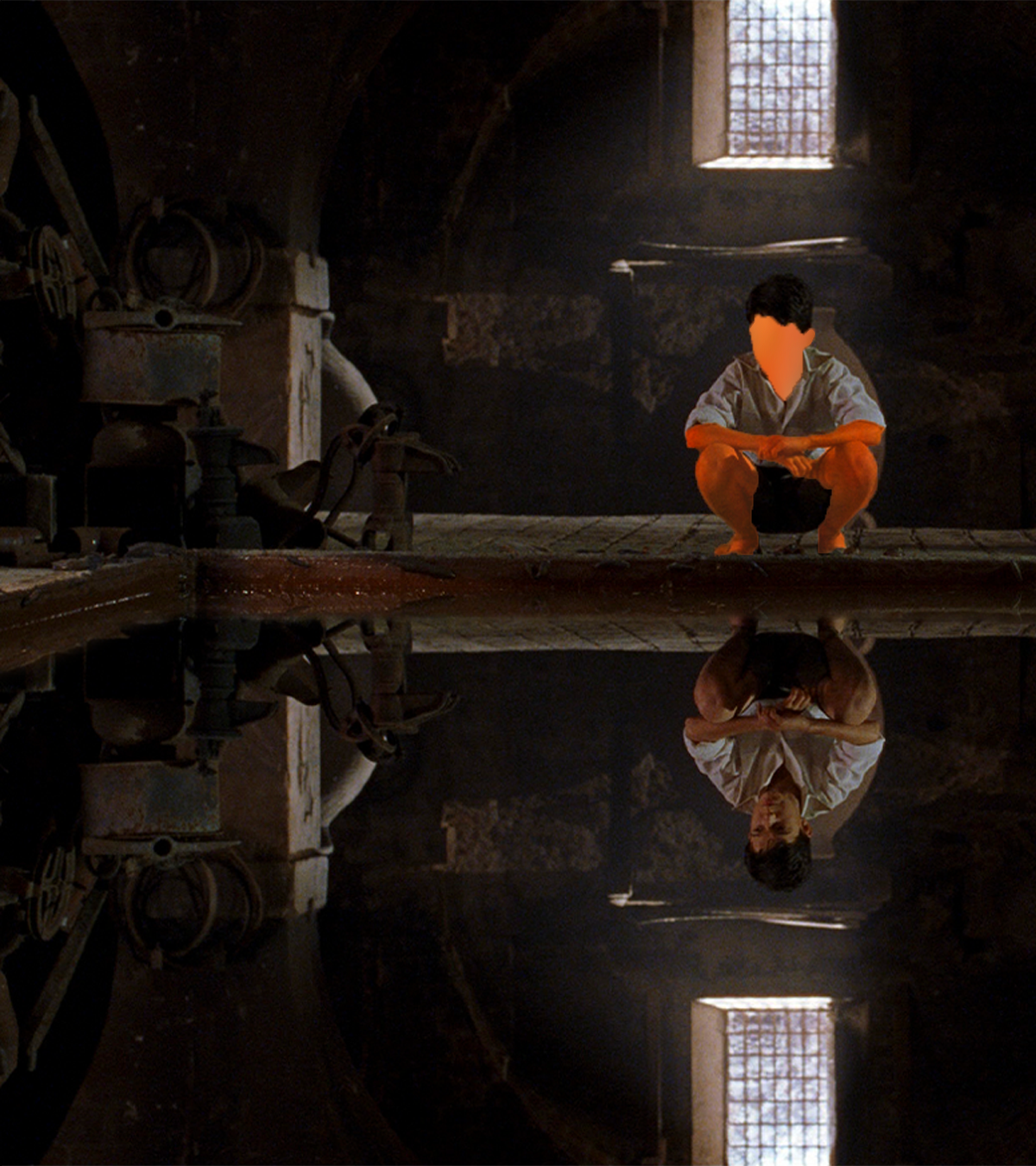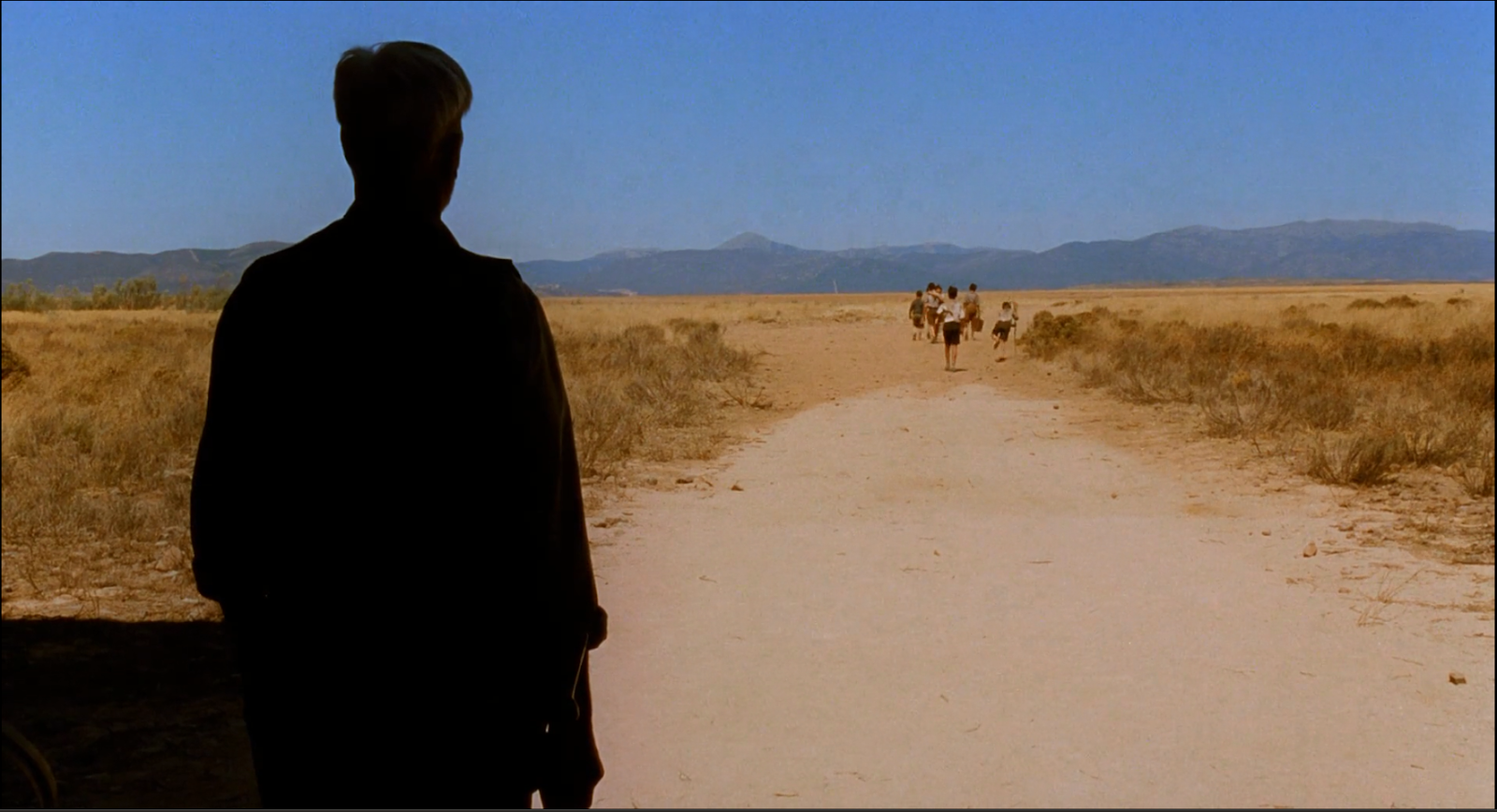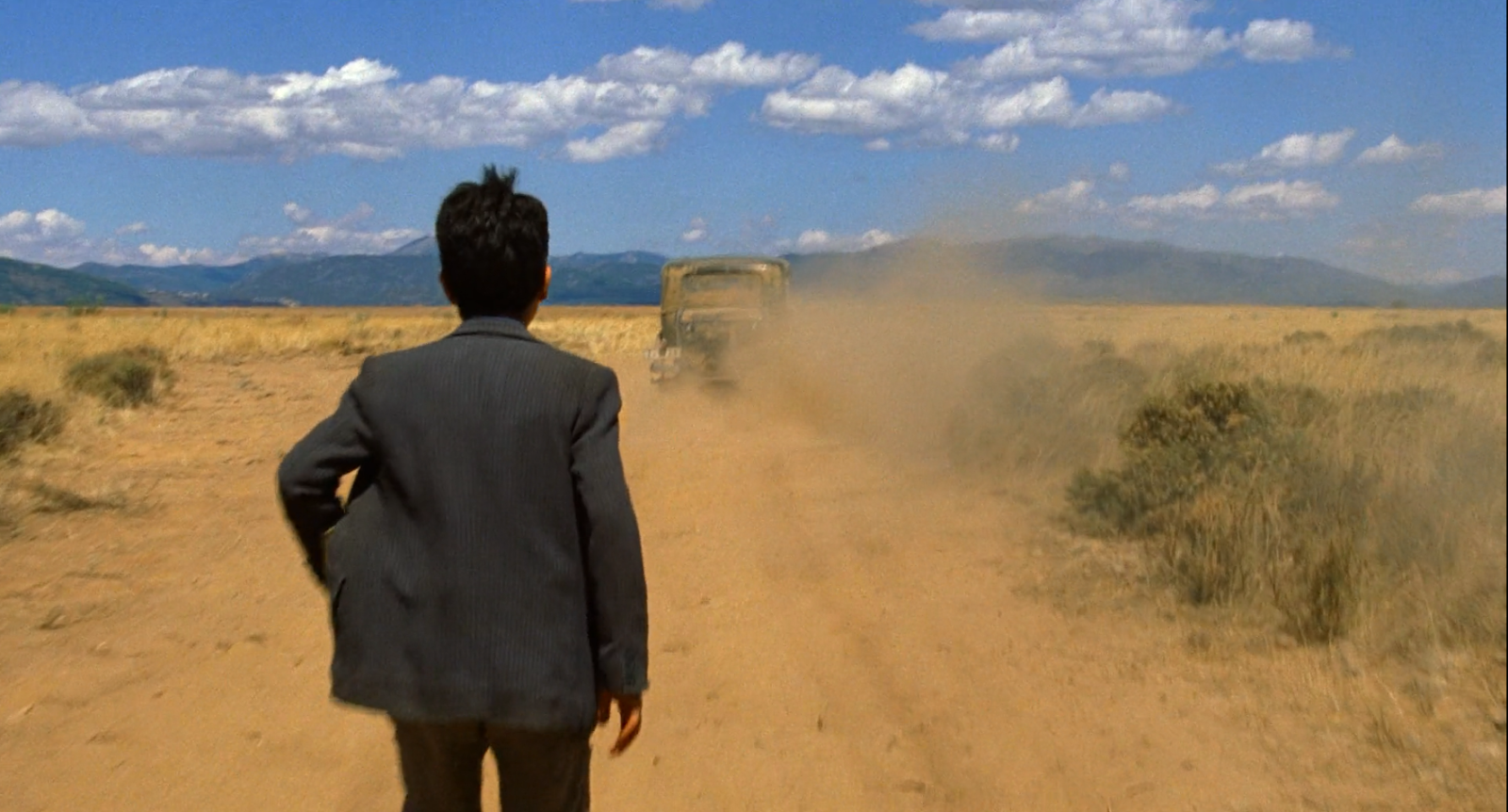A Portrait of Innocence and Evil: Childhood Trauma in “The Devil’s Backbone”
Anchored in the pre-pubescent perspective of its lead character, Carlos (Fernando Tielve), Guillermo Del Toro’s 2001 film The Devil’s Backbone tells the story of young students living in a boarding school-turned-orphanage during the last days of the Second Spanish Republic (1931-1939). Though a horror film, it is a rare entry into the genre that does not actively aim to scare its audience; rather, it renders them hollow and haunted. Refusing to resort to the traditional bastion that is jump scares, The Devil’s Backbone directs its focus on building an overwhelming sense of dread. The film mirrors the bomb embedded in the courtyard of the school, implying that the worst could come at any second. For aside from housing a dormant explosive and actively supporting what has now become the losing side of the civil war, the school also finds itself haunted by a spirit known simply as “The one who sighs.” Yet, this ghost is not some eldritch horror; instead, it is the benign residue of a murdered student, Santi (Junio Valverde). This dead child tries to warn his friends that “many of you will die,” not as a result of the war or the supernatural but as the actions of another former student and orphan: Jacinto (Eduardo Noriega). A manifestation of the film’s major theme of cyclical trauma, Jacinto’s character functions as the idea of the very “tragedy condemned to repeat itself time and again” mentioned in the film’s opening narration, as his own childhood trauma ultimately culminates in him traumatizing a whole new generation of children.
Juxtaposed with the emaciated students and elderly staff at the institution, Noriega’s portrayal of Jacinto is immediately granted a sense of gravitas as he dominates every scene he enters. Further helping him exude a degree of visual power is his framing in low angles, which immediately identify him as a force to be reckoned with—something that is only emphasized by his trademark tank top and wide cut trousers held up by suspenders, which satisfy the visual cliché of the vintage tough guy. Yet contrapuntal to his appearance, his character is very much still that of a child, one marked by notions of bravado, entitlement, and, above all else, a profound sense of insecurity. Having lost both his parents at a young age, Jacinto spent 15 years at the school and grew to resent and despise it. Taken advantage of by the headmistress Carmen (Marisa Paredes), who takes him as her lover when he is still a minor at 17, he becomes a troubled bully feared by all of the students, thus earning himself the epitaph of “The prince without a kingdom,” bestowed upon him by his teachers. Even before he blows up the school for its gold and commits murder, we can clearly see the start of a cycle of abuse, for we are exposed to how Jacinto’s bullying has influenced the school’s current bully Jaime (Íñigo Garcés). In recounting his own memories at the school, Jaime explains that he and the other boys were all afraid of Jacinto. But despite knowing how it feels to be tormented, he not only bullies our protagonist Carlos, but also exposes him to punishment by Jacinto, as if he were trying to ensure that the new boy would have to suffer in the same way that everyone else at the school has.
However, while the effects of Jacinto’s bullying are evident early on in the film, the reason for this behavior—namely his own warped childhood—is not made clear until later on. As he maintains a relatively stoic, if not sullen attitude for the first half of the film, it is only when he decides to confront Carmen—whose prosthetic leg renders her weak—that the high pressure situation causes him to regress to an increasingly juvenile state. After finding out that the headmistress wants to take the remainder of the school’s gold in order to bring the remaining students and staff to safety in France, he accosts her with confidence, supported by a camera angle which points up at him in close-ups which emphasize his size and power. He tells her “You can go, but the gold stays.” And when she asks him if it is all he cares about, he gives a cool yes before cornering the older woman.
Instinctively, Carmen attempts to defend herself by first appealing to his sense of gratefulness, arguing that she saved his life by hiding him at the school and keeping him from being conscripted and killed in the war. When he ignores her pleas and continues his advance, she spits out an insult, telling him that “of all of the orphans, you were always the saddest. The lost one.” She then reminds him of his nickname “The prince without a kingdom.” The second these words leave her lips, he brutally grabs her arm with one hand and prepares to strike her with the other, but he is stopped by Dr. Casares (Federico Luppi), one of the few remaining teachers at the school. Here, we see Jacinto unable to rely on the physical advantages of his relative size and youth for the first time. Rendered inactive and emotionally distraught from Carmen’s insult, he can do nothing but lash out insults at Dr. Casares’s masculinity. That fails to shake the older man; he simply moves to knock Jacinto out with the butt of his shotgun. Jacinto is then left to walk away from the school, in a manner evoking a sullen child being expelled from a playground. Concurrently, the camera shifts to a high position and frames Jacinto as a small, weak individual walking away from a crowd of younger boys who appear closer to him in size. Due to this framing, the audience is first exposed to how Jacinto is essentially an angry child lurking under the surface of an adult facade.
The facade Jacinto puts up progressively disintegrates as the film develops, starting first with the revelation that he was the one responsible for Santi’s death, and later with the murder of his former fiancée Conchinta (Irene Visedo). In the former scene, the encounter begins with violence, the same type of violence we saw inflicted upon Carlos. When the altercation becomes more violent as Jacinto slaps Santi, we anticipate that Jacinto will do something to actively harm Santi—but he never does. Instead, Jacinto, like us, is just as surprised and horrified that Santi’s death is ultimately the result of an accident, whereby a seemingly innocuous push results in Santi’s skull being cracked on a pillar. Faced with this immense and unforeseen pressure, Jacinto again reveals his true childish nature: he shows immediate remorse and begins to shake Santi, begging him to wake up, as if they had only been playing a childish game. As Jacinto begins to search the basement for something to hide his crime, the camera remains close to Jacinto’s panicked face, while the harsh lighting emphasizes his facial expressions. In this moment, Jacinto is not a criminal mastermind or a seasoned murderer; instead, he is a scared boy looking for any way to cover up his mistake—a crime he never intended to commit.
Later on in the film, when Jacinto confronts his ex-fiancée, he still appears childish, even as he towers over Conchita. Having just bombed the school, he confronts Conchita on her way to seek help from the nearby town. The camera emphasizes his size through wide shots, and he is also cheered on by his new compatriots—men who have joined his cause under the promise of gold. And yet, despite the visual cues that point to his power, Jacinto still appears to be an angry juvenile attempting to address an authority figure. This is largely due to a combination of Visedo’s powerful performance and her visual portrayal. Although she is shot both over his shoulder and from a higher angle, her central position in the unflinchingly steady frame enables her to exercise a sort of visual dominance. This is then only compounded by her stoicism and composure in the face of his incrementing rage. Each time Jacinto asks her to apologize to him, she calmly refuses and looks at him with a profound sense of disappointment, as if dressing down a child. She repeats the same refrain each time: “I’m not afraid of you.” Eventually, he responds by grabbing her head, and she reacts by calling him an “animal.” Once more, Jacinto is unable to accept this lack of validation and stabs the woman from whom he was initially planning to steal the gold. This moment, aside from being immensely tragic, also leads us to question why he still wants the gold—as it was her desire to own a farm in Granada, not his. We do eventually receive an answer, in what is one of the film’s most somber moments.
After returning to the orphanage and imprisoning Carlos, Jaime, and the other remaining students, Jacinto and his new compatriots sit by a campfire. Since he found old records instead of the desired gold hidden in the school, Jacinto goes through the paperwork until he discovers his own school file. Though the other men are clearly too exhausted and disinterested at this point to share, Jacinto’s face occupies the frame as he brags about the pictures of his parents with naïve sentimentality. At this point, he has lost everything: his fiancée, the only home he ever knew, and the hope of finding gold. However, for arguably the first time in the film, Jacinto expresses genuine joy. He urges his compatriots to behold his “elegant” accountant father and his mother from Toledo as he shoves their photos toward his compatriots’ faces. Upon seeing a blurry photo of himself as a baby in his mother’s arms, his innate reaction is to clarify that “it’s blurred because I moved, but that’s me,” as if he has to justify the actions of his baby self. Uninterested and too busy talking about escaping to Portugal, the other men ignore him. And yet Jacinto still repeats “that’s me” once more, signifying to us, the audience, that this whole activity was a means for him to prove to himself that he was once an innocent child with loving parents. Suddenly, just as quickly as it came, this moment of immense vulnerability ends. Jacinto looks at a photograph of his younger self alone for the first time in the school, and he reads its caption, written by the late Carmen: “A prince without a kingdom, the man without warmth.”
As the words leave his mouth, the angle of the shot shifts, changing the dynamic of the close-up. From this new perspective, the flickering flame that bathed the scene in a warm, nostalgic tone casts a harder shadow on Jacinto’s face, rendering him sinister with a red glow in his eyes. In a moment of masterfully subtle acting by Noriega, his eyes—which were teary with longing and sadness—close and reopen, instantaneously revealing anger. This is accompanied by a reaffirmed conviction that “I saw that gold. It’s here” and a promise to burn the school down once the gold is found. In this scene, lasting less than two minutes, Jacinto is emotionally stripped to his very foundation. We now know why the gold mattered more to him than his livelihood, more to him than the people and the place who raised him, and more than his own fiancée. For this man—who is fundamentally still a scared and lonely child—the gold has somehow become all the difference between a loving and unloving childhood. Hence, Jacinto feels that he must take it away from the school. He cannot tolerate the idea that these boy—who remind him too much himself—should get something that he was deprived of when he was a boy.
When Jacinto eventually finds the gold, it is too late. As he uncovers the remaining bars hidden inside Carmen’s prosthetic leg, he hears his companions starting their car and leaving him behind in the wreckage of the school. As he runs out of the gates, we see the first shot mirroring Carlos’s attempts to catch his tutors and the other partisans when he was first delivered to the school. Using the same steadicam technique and wide shot composition, the film recreates this earlier sequence verbatim, with Jacinto mirroring Carlos’s childish reaction of trying to catch a car that has abandoned him. Ironically, at this point, Jacinto’s actions have pushed Carlos to mature so far from that initial characterization so that the two have essentially switched roles. Jacinto is now the orphan outsider who has been condemned by his allies, while Carlos, as well as Jaime and all the other surviving children, have become experienced and traumatized youths, ready to do anything for their survival. Hence, it is only apt that Jacinto is murdered by the boys, who use weapons and wooden spears of their own making. Through this murder, the boys have made an active decision to forsake their innocence for their lives, killing any notions of a regular childhood along with their tormentor. Jacinto’s own desperation and tragedy manifested as cruelty, which led the boys to take such a drastic action. But by exercising their agency and having every single member participate in the killing, they have also actively chosen to commit an act of cruelty.
This choice has fundamentally changed them, and that change is clearly reflected in the final shot of the film, which shows the boys leaving the school. This wide angle, framed from the perspective of Dr. Caseres, immediately resonates with the audience, as it perfectly mimics an earlier shot in which a helpless Carlos is forced to watch his tutor and the other partisans drive away. Only this time, Carlos and his friends have taken on the role of the partisans. Just as their parents and guardians left them behind the gates of the school, as young and innocent souls, they too have left behind the walls, those same parts of their identity.
In one single visual moment, without the need for further exposition, the audience understands that the cycle of violence and corruption has been continued. These boys may or may not grow up to be as violent and irrational as Jacinto—that is up to us, as audience members to decide. But it is clear that they have become like him, a “tragedy condemned to repeat itself time and again.”
Illustration by Garreth Chan



